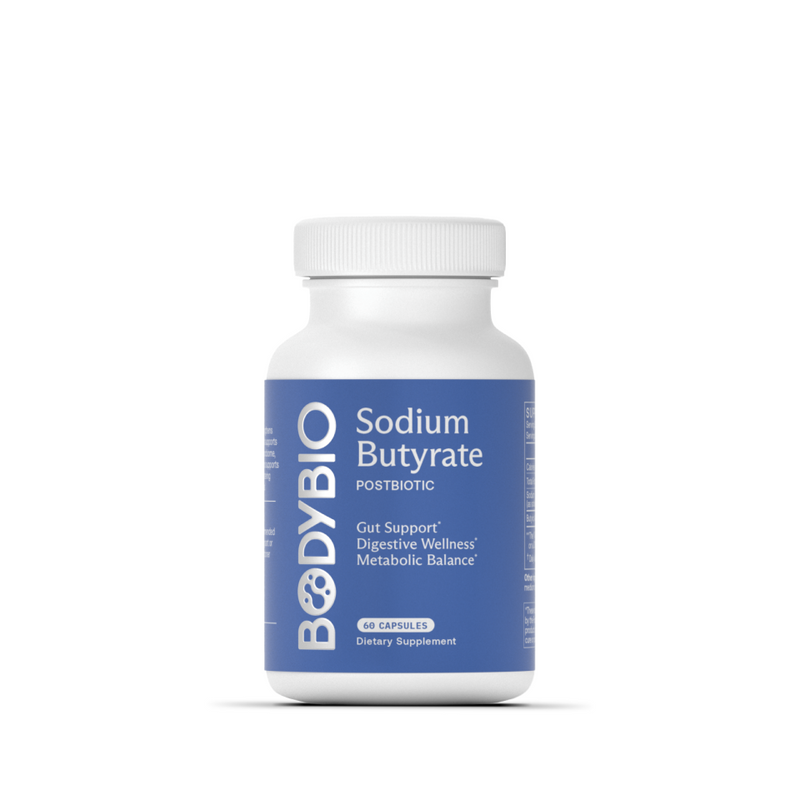Vitamin D and the Sun: What You Need to Know About the “Sunshine Vitamin”
Authors:

Dr. Thomas Wnorowski
PhD, CNCC Research Director, BodyBio & Biomedical NutritionistFortunately, it seems more and more people are realizing the profound impact that vitamin D has on our health and well-being. However, the best way of obtaining and absorbing vitamin D—via sun exposure—still remains controversial. The popular refrain that sun exposure causes skin cancer inspires fear of the sun, but sunlight is just as necessary for our health as clean water, oxygen, and healthy food.
The synthesis of vitamin D is just one reason we need healthy sun exposure on a daily basis, but it is an important one. In this article, we’ll investigate how vitamin D is absorbed from sunlight exposure, how much vitamin D we can actually get from the sun, and other factors affecting vitamin D production from sun exposure.
How do we absorb vitamin D from the sun?
Vitamin D is pretty unique in that our bodies can synthesize it via a conversion process that occurs when sunlight comes into contact with our skin. Cholesterol molecules in our skin cells absorb UVB rays from the sun, turning inactive vitamin D2 into active vitamin D3, the metabolite that then goes on to support the immune system, gut health, brain function, and much more.
We can also get some vitamin D exogenously in our food, but most food sources do not contain high enough levels to support us on a daily basis. It is also less well-absorbed than the sunlight to skin pathway since the food has to undergo digestion before the nutrients can be absorbed via the gut lining.
Those who have gut health issues are even less likely to absorb enough vitamin D, and many other vitamins and minerals, from food sources. We can work to improve the gut environment through a healthy diet, supplementation of key nutrients like butyrate and probiotics, and stress reduction, but sun exposure is still a critical component of health and well-being that often goes ignored.
Not only is vitamin D more efficiently produced and circulated when synthesized in the skin, it also lasts 2-3 times longer in the body than vitamin D ingested orally. Vitamin D produced in the skin is immediately transported and used in our cells and so is much more efficient. [1]
How much vitamin D do you get from the sun?
A study on vitamin D and skin physiology states that sun exposure up to one minimal erythemal dose (MED), aka sun exposure causing minimal skin coloring after 24 hours, is the equivalent of ingesting between 10,000 and 25,000 IU of vitamin D2 (which would then be converted in the skin to vitamin D3). [2]
How long an individual needs to be in the sun to achieve this dose is dependent on a number of variables, from melanin levels in the skin to time of day. In general,10-30 minutes of midday sun exposure (depending on your location and season) per day is a good guideline to help maintain vitamin D levels. [3]
In addition, consistency seems to be an important factor to produce vitamin D via sun exposure. A recent study on 60 Korean adults with vitamin D deficiency found that sunlight exposure on 20-30% of their skin for 30-60 minutes a day just three times per week was less effective than vitamin D supplementation, but still somewhat improved vitamin D levels upon follow up after one month [4].
Factors affecting vitamin D production from sun exposure
There are many factors that affect vitamin D production via sunlight exposure on the skin, which unfortunately make it difficult for many people at one point or another to produce active vitamin D3 endogenously. Let’s take a look at some of these factors.
Where you live and what season you’re in
Your geographic location and the season you’re in play a huge role in how much vitamin D you’re able to produce from the sun. Research found that human skin on clear sunny days in Boston from November through February produced zero vitamin D3. Farther north in Edmonton this winter period of ineffective vitamin D production lasted even longer, from as early as October all the way through March—about half the year! But further south, in the southern United States and Central America sunlight is easily converted to vitamin D3 during these months [5].
So if you live farther north than a latitude of 35 degrees or so, you may want to consider supplementing with oral vitamin D during the winter months. Or head south for a while if you can! And during the summer months, make sure you soak up as much healthy sunshine as possible.
Time of day
Around noon is the best time for optimal sun exposure. At this point in the day, the UV wavelengths are optimal for vitamin D production. This recommendation goes against many government guidelines to stay out of the sun during the midday hours in order to prevent skin cancer and get sun exposure later in the day instead.
However, the longer UV rays later in the day are actually more likely to cause skin cancer than those present at midday, which are more conducive to vitamin D production [6]. So, it’s better for skin cancer prevention and vitamin D synthesis to expose the skin to short periods of sun during the midday hours than longer periods of sun later in the day.
How much melanin you have
Having a darker skin color does affect vitamin D production, however, the reduction is only slightly less than those with fair skin. Melanin in the skin effectively absorbs UVB rays from the sun, reducing the amount that can be used to convert vitamin D2 to D3. Those with darker skin tones simply need to spend a little longer in the sun to produce higher levels of vitamin D [7]. Be careful, though! Even very dark skin can still burn when exposed to the summer sun unprotected for long periods of time.
Sunscreen use
Last but not least, sunscreen use affects our endogenous vitamin D production. Most of us likely don’t put on sunscreen as regularly as we “should” be, according to the advice from most dermatologists and anti-aging medicine experts. There is a lot of rhetoric around the importance of sunscreen to keep skin youthful and unblemished.
Certainly, sunscreen use is important when you know you’re going to be outside for multiple hours in the summer sun. However, a sunscreen with just an SPF of 8 absorbs between 92 and 95% of UVB photons, reducing vitamin D synthesis by the same amount [8]. An SPF of 30 increases that percentage to 95-98% absorption of UVB rays [9]. If you’re going to use sunscreen, just make sure you’re also getting some healthy sun exposure during the midday hours before applying or reapplying.
The bottom line on vitamin D from sunlight
Our bodies are designed to make vitamin D from sunlight exposure. It’s the most efficient and bioavailable way to get our vitamin D needs daily. Just 10-30 minutes of midday sun is optimal for creating vitamin D in the skin.
To achieve this, you could go for a walk on your lunch break. Play outside with your kids or the dog. Or simply sit outside in the sun with a good book or a cool beverage on a sunny summer day. However you choose to spend the time, we were meant to be out in the sun, for vitamin D and many other physical and mental health benefits. Take advantage of the sunlight this summer, and if you’re lucky enough to live in a place where you have summer sun year round, don’t waste the chance to make sunlight an integral part of your health maintenance strategy.
Interested in vitamin D for gut health and the other key nutrients that support vitamin D efficiency? Learn more here.
